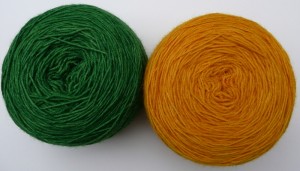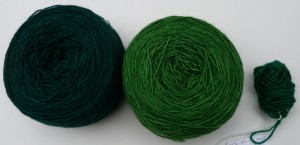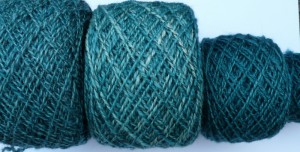It is now nearly 2 years since I went to Stitches East. High time I finally finished telling you about it! In my previous witterings I had got as far as the Saturday night. So we will start here with Sunday.
On Sunday morning I took Joan Schrouder’s class on Shaping Shawls: Triangles & Trapezoids. We looked at different directions to knit shawls. First, from the point up, and from the top long edge down. We practiced both of these on the same sample, without casting off and on again in the middle.

This one was fun to knit, but the rows are all rather horizontal and I’m not sure whether a shawl made in this method would actually be very flattering on short, wide, me.
Then a wing-shaped triangle, with sideways knitted on edging. I do rather like this shape.

And lastly we looked at knitting side-to-side. This has an elongated middle section, allowing you to make the shawl wider without getting any longer. I can definitely see this one having potential too, and I like the vertical stripes.

Joan is a lovely person and an excellent teacher, and a mine of experience and useful information. Her class was jammed full of useful information about how you can actually use these shapes to make interesting and very wearable shawls which are also fun to knit. If I have another opportunity to take a class with Joan I will jump at it!
The last class of the event was Fully Fashioned and Fabulous with Melissa Leapman. She was an excellent choice for the end of a long four days. I don’t know how she manages to have so much energy! She managed to make the class enthusiastic and chirpy, without wearing us into the ground 🙂
We explored fully fashioned increases and decreases to shape knitting:

Splitting a central cable for V-neck:

Splitting for a V-neck in a lace pattern:

Creating the illusion of shaping with increases and decreases, first in garter rib:

Then in normal rib:

Melissa is a prolific designer (I have a couple of her books already), and I really enjoyed the tips and tricks from her class. Towards the end of the class we discussed how you could use fashioning to create shapes, and also to create the illusion of shapes. I love this kind of thing, and found it fascinating.
As you may have guessed from previous hinting there was a bit of stash enhancement as well 🙂
Some books:

A pattern and yarn for some mittens, and some lace weight yarn:

A shrug pattern, and some more lace weight yarn:

Some purple and green sock yarn (I think the colours of this are fantastic!):
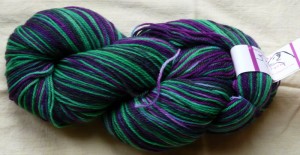
Some more lace weight yarn:
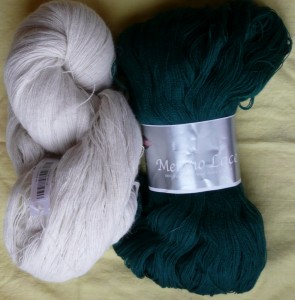
Some double pointed needles, and the Webs catalogue:

Some bargain cashmere / merino:

Some more bargain cashmere / merino:

Yet more bargain cashmere / merino:

I had a wonderful time at Stitches, although I was absolutely exhausted afterwards! Great teachers and classes, and it was wonderful to see so many things at the market that I have only ever read about or seen online. I would love to go again one day.





